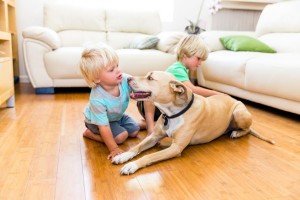 You’re not the only one who lives in your home. When you have beloved animal companions, don’t forget to consider their particular needs as well. With a little advanced preparation, you and your pet/s will be able to share your living space comfortably.
You’re not the only one who lives in your home. When you have beloved animal companions, don’t forget to consider their particular needs as well. With a little advanced preparation, you and your pet/s will be able to share your living space comfortably.
Common hazards
Choking, strangulation, electrocution, and suffocation are some of the hazards pet owners need to watch out for. Ordinary household items can become deadly if not properly stored or installed.
Window blinds cords or curtain sashes should be kept out of reach, and the same should be done for electrical cords and wiring. Also check if the wiring is frayed or exposed – if they are, cover them securely.
Medication, food, and trash should be also kept out of reach from your pets. Eliminate access to countertops or tables where they can get to food, and ensure that your trash can is covered tightly, as chicken bones, large seeds, and fruit cores can cause choking.
Harmful foods and plants
Foods that might seem beneficial for us might have the opposite effect on our pets, and in some cases could cause a lethal reaction. According to the ASPCA, avoid feeding your pets these people foods:
- Chocolate, coffee, and caffeine
- Alcohol
- Grapes and raisins
- Macadamia nuts
- Milk and dairy products
- Raw meat and eggs
- Onions, garlic, chives
- Yeast dough
- Xylitol
Some indoor plants can also pose a danger to our furry friends. Plants that are toxic to cats and dogs include:
- Aloe
- Amaryllis
- Caladium
- Calla lily
- Charming dieffenbachia
- Variegated philodendron
- Tiger lily
- Spring parsley
- Ribbon plant
- Palm lily
- Periwinkle
- Poinsettia
- Mums
Lethal substances
Cleaning products, antifreeze, pesticides, fertilizers, and rodenticides are especially dangerous to pets, so keep them tightly shut in their cabinets or containers. Rooms where you’ve placed insecticides or rodent traps should be kept off limits to your pets. In bathrooms, if your toilet has automatic bowl cleaners, keep the lid down at all times to eliminate chances of poisoning.
Small spaces
If you live in a high-rise, keep your windows closed at all times; cats are known to jump and fall out of windows, so make sure your windows are screened to protect them from falling. Also keep your doors closed to prevent your pets from wandering about.
Kittens and puppies have also been known to sneak into opened washers and dryers, so always check these laundry appliances carefully before using them.
Their own space
Giving pets their own space will prevent them from going where they don’t belong. Place their bed in a hazard-free zone, along with a water source and safe toys.
If it’s possible, create your pet area near a cat or doggy door that opens to a safe outdoor space so they can go outside easily.
Litter boxes should be placed away from feeding areas, and take special care of elderly pets by giving them access to ramps, and not steps so they won’t have a difficult time. If your pet is the type who’s always curious, consider blocking off a small, safe area with a baby gate.
Furniture and flooring
Opt for fabrics and flooring that make for easy maintenance. Consider materials like easy-care leather or ultrasuede, which can be easily wiped clean and won’t be dramatically affected by wear. You’ll want to stay away from fabrics like velvet and chenille.
As for flooring, it will depend on the type of dogs you have. If they’re smaller, lighter dogs, hardwood floors with a urethane finish is a good choice. Heavier dogs are better suited to nonporous hard surface flooring such as ceramic tile.




